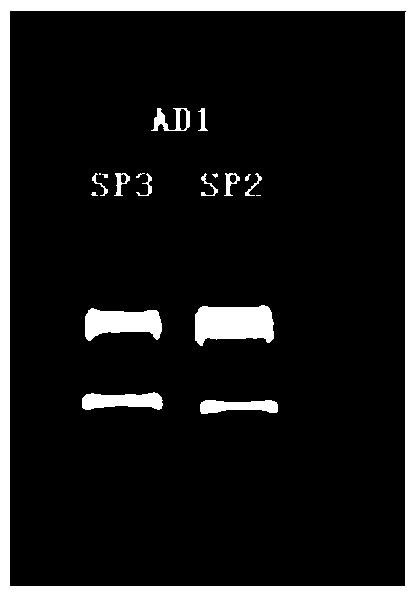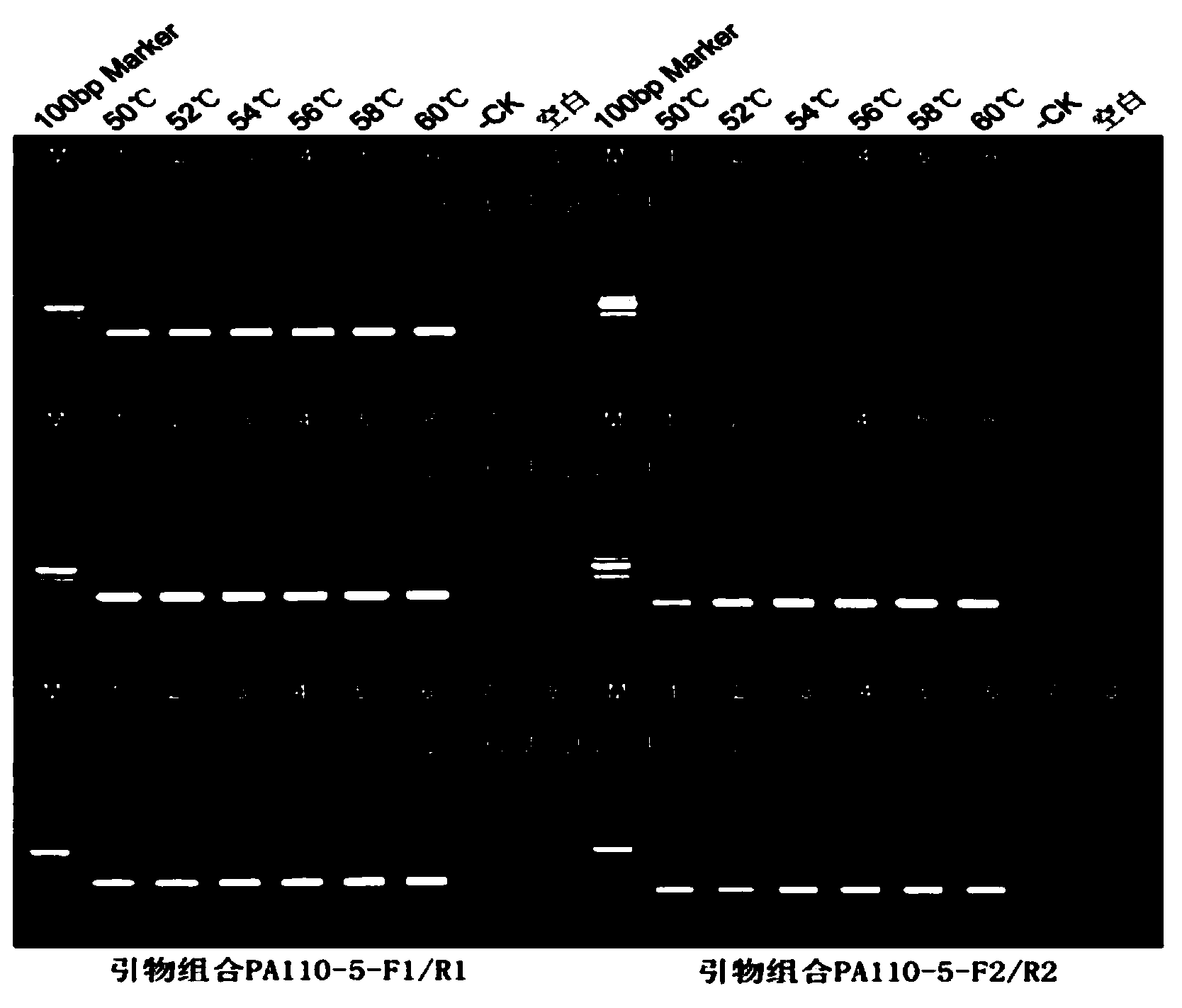Transgenic rice PA110-15 foreign insert flanking sequence and application
A technology of exogenous insertion and flanking sequences, which can be used in DNA/RNA fragments, recombinant DNA technology, determination/inspection of microorganisms, etc., and can solve problems such as lack of
- Summary
- Abstract
- Description
- Claims
- Application Information
AI Technical Summary
Problems solved by technology
Method used
Image
Examples
Embodiment 1
[0037] Example 1 Acquisition of the Flanking Sequence of the Transgenic Rice PA110-15 Exogenously Inserted Gene
[0038] The target gene for exogenous insertion of transgenic rice PA110-15 with high lysine storage protein gene is LRP gene, and its base sequence is shown in SEQ ID No.19.
[0039] The junction region sequence (SEQ ID No.1) of the exogenous inserted gene and the 5' end rice flank sequence (SEQ ID No.1) and the junction region sequence (SEQ ID No.2) of the exogenous inserted gene and the 3' end rice flank sequence were obtained by Hi-TAIL PCR ).
[0040] The basic principle of TAIL-PCR technology is to use the known sequence next to the target sequence to design three nested specific primers (special prime, referred to as spl, sp2, sp3, about 20bp), and use them respectively with one primer with a low T value. Short (14bp) random degenerate primers (Arbitrary degenerate primers, referred to as AD) combined, using genomic DNA as a template, according to the length...
experiment example 1
[0048] Experimental example 1 Screening of specific primers for qualitative detection of transgenic rice PA110-15 with high lysine storage protein gene and optimization of amplification conditions
[0049] 1. Screening of 5' end transformant-specific detection primers
[0050] According to the side sequence information of the 5' end, 4 pairs of detection primers (see Table 3) were designed to amplify and detect PA110-15, and 2 pairs of primers PA110-5-F1 / R1 and PA110-5-F2 / R2 ( figure 2 ), further through system optimization, design the orthogonal experiment of primer final concentration and annealing temperature, and finally found that the primer combination PA110-5-F1 / R1 as the 5' end transformant-specific detection primer has the highest amplification efficiency and the least primer dimer ( image 3 ).
[0051]The final concentration of primers in the PCR reaction system and the annealing temperature have a certain impact on the specificity and sensitivity of the detect...
experiment example 2
[0058] Experimental example 2 Establishment of specific detection system and reaction program for transgenic rice PA110-15 with high lysine storage protein gene
[0059] 1. Extraction and detection of plant genomic DNA
[0061] 1.1 Preparation of CTAB extraction buffer
[0062] Add 81.7g NaCl and 20g CTAB to 600mL water, after fully dissolved, add 100mL of 1mol / L Tris-HCl (pH7.5) solution, 100mL of 0.5mol / L EDTA (pH8.0) solution, and finally adjust the pH to 8.0 with HCl or NaOH solution , add water to make up to 1000mL. Use after being sterilized under high temperature and high pressure (103.4kPa / 121°C) conditions for 20 minutes.
[0063] 1.2 Extraction method
[0064] a. 100mg sample, fully ground into powder and transferred to a 2mL centrifuge tube.
[0065] b. 1 mL of CTAB extraction buffer preheated to 65°C, mix thoroughly, suspend the sample, and mix gently.
[0066] c. Water bath at 65°C for 40 minutes, during which time mix by inve...
PUM
 Login to View More
Login to View More Abstract
Description
Claims
Application Information
 Login to View More
Login to View More - R&D
- Intellectual Property
- Life Sciences
- Materials
- Tech Scout
- Unparalleled Data Quality
- Higher Quality Content
- 60% Fewer Hallucinations
Browse by: Latest US Patents, China's latest patents, Technical Efficacy Thesaurus, Application Domain, Technology Topic, Popular Technical Reports.
© 2025 PatSnap. All rights reserved.Legal|Privacy policy|Modern Slavery Act Transparency Statement|Sitemap|About US| Contact US: help@patsnap.com



